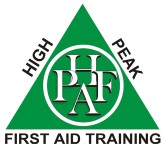Acute Mountain Sickness (AMS) is the most common and mildest form of altitude sickness, typically occurring above 2,500 meters and presenting with symptoms like headache, nausea, fatigue, and dizziness. It is usually manageable with rest, hydration, and gradual ascent but can progress if ignored. High-Altitude Pulmonary Edema (HAPE) is a severe condition where fluid accumulates in the lungs, leading to breathlessness, chest tightness, and coughing, often requiring immediate descent and oxygen. High-Altitude Cerebral Edema (HACE) is the most dangerous altitude illness, marked by brain swelling, confusion, loss of coordination, and potentially coma, necessitating rapid descent and emergency treatment. While AMS is a warning sign, HAPE and HACE are life-threatening and require prompt intervention to prevent fatal outcomes.




